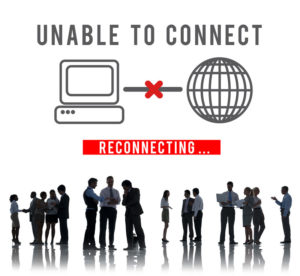Part 5: Strategic Planning – The Meeting: Why are we Here?
By: KHA Consulting Team
The following is part nine of a nine-part series on strategic planning. This blog series includes identifying the need for strategic planning, setting a level playing field, defining the organization and its purpose, and selecting the initiatives, goals, and actions that will make the organization successful.

The right team is here, and we are cohesive; it is time to collaborate!
As an owner or executive, can you answer the following question about your organization:
- Why are we here?
- Not in the room but as an organization, why are we here?
Maybe you can answer it, but the real question is, ‘Can your team?’ Sure, your team can answer this question, but how consistent are their replies with yours and your organizations? Likely, their responses are not in the same zip code as yours, which indicates a couple things: 1) Messaging from the top of your organization down is inconsistent, and 2) The strategy of the organization is unclear or at least muddled. An article from the Harvard Business Review highlights an organization’s strategy importance and estimates that 95% of employees are disconnected from the organization’s strategy.
Challenge: Take your leadership team and see if they can answer similarly and succinctly the question addressed above. Leadership should control the experiment by not allowing social loafing and groupthink to get the answers. If you don’t control the experiment, you will get an answer that does not accurately represent each employee. Odds are each leader has different things to say; some of that is okay, however, we will need to bring the team together to reset the stage so that your organization’s goal is clearly defined.
MESSAGING SYMMETRY
When messaging is inconsistent internally, do you think your customers, the marketplace, and your stakeholders have a clear understanding of what your organization does and how it gets accomplished? Recently, Facebook has had some issues with organizational messaging; a third-party company was allowed to mine personal data of over 50 million users and in turn, use this information, not to the benefit of the consumers but to benefit outside organizations impairing user privacy. A decade ago, Facebook said no advertising would be used on their site and that only ‘.edu’ addresses would be allowed. Then, little by little advertising trickled in along with more users and an open platform. Now, you cannot avoid seeing blatant sponsored posts and ads on your feed. Facebook like many organizations had good intentions but lacked clarity across the organization and its internal and external stakeholders.
When the strategy of any organization is unclear, it hurts stakeholders, both internal and external. The marketplace looks for value, and customers need the value that your company can bring. Your future customers are even begging for your offering, whether they know it or not; it’s your job to put the right teams, tools, and value proposition together to convince them.
Your top management team must be unified on the following items: Mission, Values, and answering ‘What do we do?’ in order to create a clear and direct message for all those involved to follow.
MISSION
Mission setting for an organization is very challenging. Your quantitative types, such as business analysts, deem this the softest of soft definitions in a business. In fact, you may be challenged to keep your employees’ interest if they do not understand how critical the mission is to everything the organization does. The mission is everlasting and must propel the team and its people forward. How do you know if you have a good mission? You have a good mission if it is cemented in both your internal teams’ actions and your external customers’ awareness that allow your organization to propel forward despite you. Your mission must make lives better; if it currently does not, I strongly encourage you to revisit your mission and your mission statement before your organization becomes irrelevant to both your employees and the marketplace. Your mission must explain the question of ‘Why are we here?’ You must create space for this thought process in your organization among the leaders and employees who carry out daily functions.
During a strategic meeting to development the mission statement, our consultants typically use colorful 5 x 8 Post-it Notes to fuel conversation around the mission. Leaders and employees tend to own what they write as we walk through each item. It also allows the teams to understand how their counterparts think across the organization. During the strategic meeting, it is critical to avoid groupthink (where decisions are made that discourage creativity or responsibility) and dominating individuals, while at the same time beginning to establish ownership in the outcomes of the strategic planning sessions. Next, we discuss values.
At KHA Management Consultants, we have experience working with organizations on Strategic Planning. We facilitate the process with the organization’s key constituents to ensure buy-in, ownership, and a new way of thinking about the organization and its stakeholders among all levels of employees. From a resource perspective, we primarily use our experience but also tap into the top-level resources such as those provided by Harvard Business Review and MentorPlus. Some of those materials, frameworks, and lessons have been used in writing this blog.
KHA Management Consultants, the consulting wing of KHA Accountants, PLLC, based in Flower Mound, Texas, is always looking for key clients ready to take their business to the next level. If you have a desire to improve, take the first step toward success with the strategic planning experts, and contact us at 972-221-2500.

